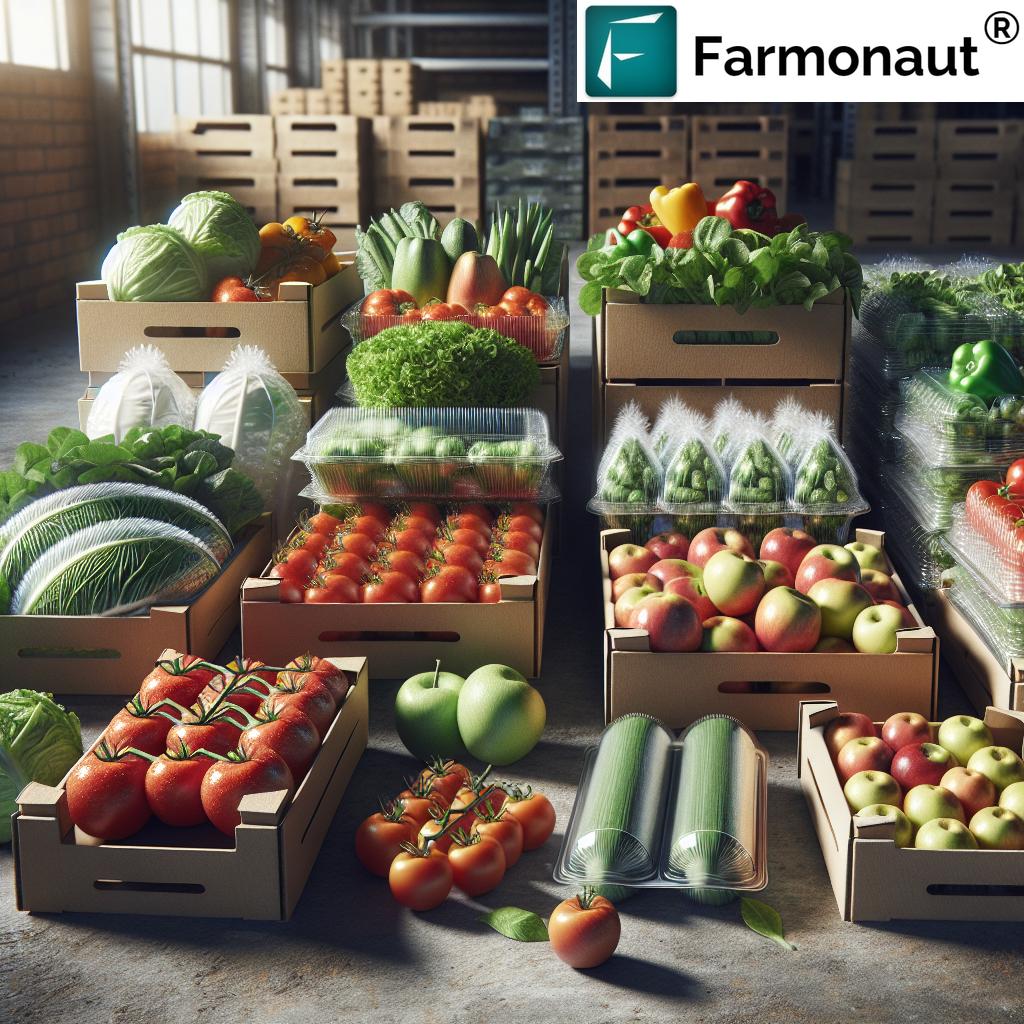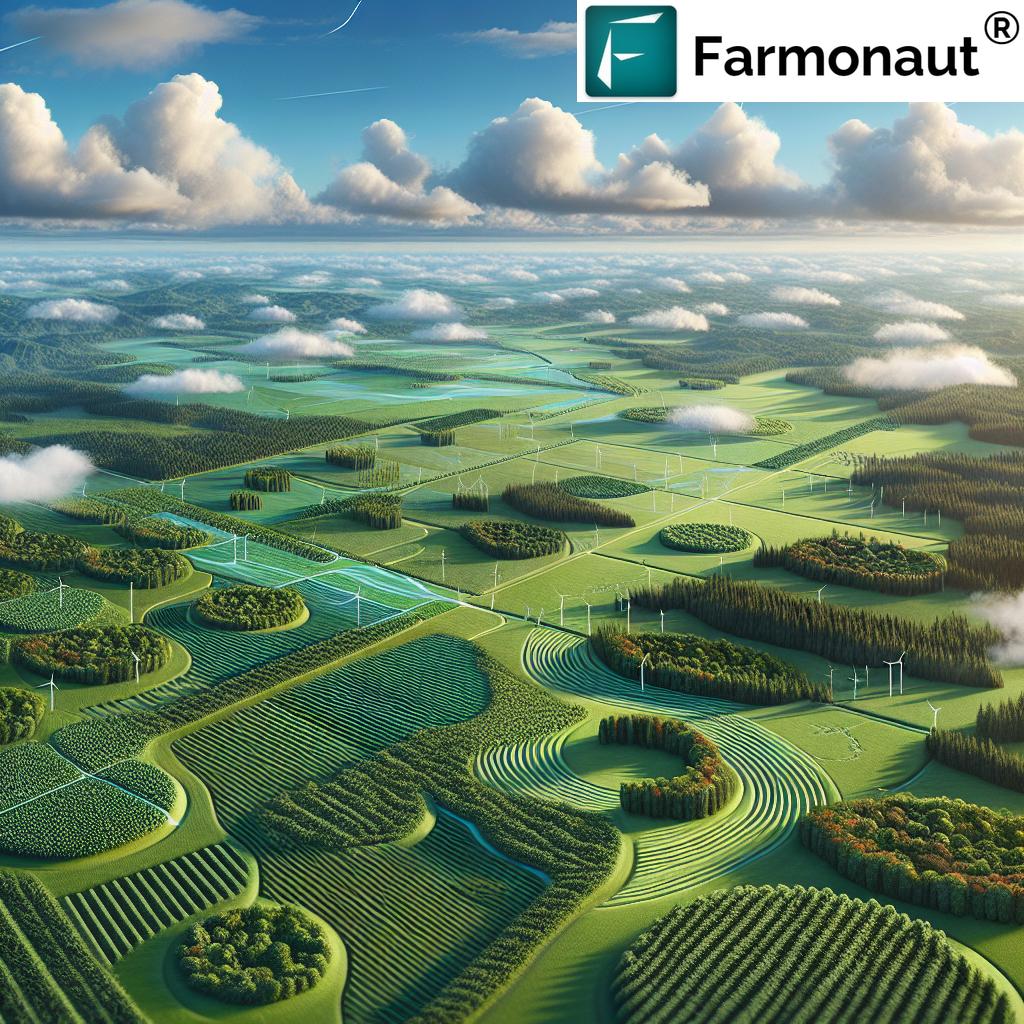Top 5 Dairy Cow Breeds for High Milk Production in 2026
Table of Contents
- Introduction
- Understanding Dairy Cow Breeds
- Trivia: Holstein Dairy Innovation
- Top 5 Dairy Cow Breeds in 2026
- Comparative Feature Table: Top 5 Dairy Breeds
- Small Dairy Cow Breeds: The Compact Powerhouses
- Hairy Cow Breeds: Resilience Meets Tradition
- Breeding, Nutrition & Technology in Modern Dairy
- Farmonaut: Pioneering Precision Dairy Monitoring
- Trivia: Jersey Cow Breeding Breakthrough
- Future Dairy Cow Breeds & Industry Trends
- Frequently Asked Questions (FAQs)
- Conclusion
Dairy Cow Breeds: A Comprehensive Guide for Modern Farming in 2026
The ever-evolving landscape of dairy agriculture is reaching new heights in 2026, with milk cow breeds at the heart of this transformation. Maximizing production is no longer just about volume—it is about animal health, environmental adaptability, and leveraging cutting-edge breeding and digital technologies. Whether you are a progressive entrepreneur managing a commercial herd or a smallholder optimizing a compact farm, understanding the best dairy cow breeds for the upcoming year is pivotal. This comprehensive guide brings you the top options, from high-yield Holsteins to indigenous and even hairy cow breeds better suited to mountainous regions and diverse climates.
Choosing the right breed for 2026 means balancing maximizing yield with resilience and animal welfare, all while adapting to climatic changes, evolving market demands, and technological disruptions. Let us explore the best dairy cow breeds leading this new era in farming.
Understanding Dairy Cow Breeds: Fundamentals for 2026
Dairy cow breeds are specifically bred through years of selection to optimize milk production, protein, and fat content. These breeds vary in size, adaptability to different climates and management systems, and suitability to produce diverse dairy products (e.g., cheese, butter, specialty items). The choice of dairy cow breed for your farm in 2026 will largely depend on:
- Geographic Location & Climate: Some breeds thrive in temperate regions, while others can withstand extreme heat or cold without extensive infrastructure.
- Farm Size & Infrastructure: Larger breeds require more space and resources, while small dairy cow breeds suit compact or urban farms.
- Management Preference: Pasture-based, mixed, or intensive management systems require different breed traits.
- Targeted Dairy Product: Milk for fluid consumption, cheese, or other specialty products demands unique milk composition in terms of fat and protein.
- Technological Innovation: API access to environmental and yield data, genetic analysis, and blockchain traceability support better breed selection and management.
What Makes a Cow the Best for Dairy?
The best dairy cow breeds excel in high milk output, health and reproduction, resilience to environmental changes, easy management, and cost efficiency. In 2026, innovative breeding techniques, coupled with precision agriculture tools, bring new opportunities to optimize these traits.
Top 5 Dairy Cow Breeds for High Milk Production in 2026
Let us review the leading milk cow breeds for modern farming. These breeds are not just at the top in milk yield but also in adaptability to changing conditions and compatibility with future-ready farm management technologies.
-
Holstein-Friesian: The Gold Standard for High-Yield Dairy
Holsteins are the most widely recognized and globally celebrated dairy breed, acknowledged for their extraordinary capacity in milk production. These large-frame cows, averaging 600–700 kg, display iconic black-and-white markings.
- Milk Yield: Averaging 22,000–27,000 pounds (10,000–12,250 liters) per year.
- Milk Composition: Moderate fat (~3.7%) and protein (~3.1%) content, ideal for fluid milk markets.
- Management: Thrive in large-scale commercial dairies with robust infrastructure and cooling systems, as they can struggle in extreme heat.
- Technological Advances: Ongoing precision breeding, genomic selection, and AI-driven health monitoring maximize output and reproductive efficiency.
- Environmental Considerations: Require higher feed inputs compared to smaller breeds—ideal for farms with ample resources and market access.
-
Jersey: Small Dairy Cow Breed with Rich Returns
Jersey cows are renowned for their smaller size (400–500 kg) and high butterfat milk. Their adaptability across various climates and lower feed requirements make them the ideal choice for smaller and medium-sized farms.
- Milk Yield: 14,000–18,000 pounds (6,350–8,200 liters) annually.
- Milk Composition: Exceptionally high in fat (4.8–5.2%) and protein (3.7–3.9%)—perfect for cheese and specialty dairy products.
- Adaptability: Jerseys excel in both hot and cold climates with less feed input, reducing overall costs.
- Technological Breeding: Genomic tools are increasing fertility rates, longevity, and personalized nutrition plans for this breed in modern systems.
-
Guernsey: The Balanced Output Specialist
Guernsey cows provide a harmonious balance of milk volume and quality. Distinct golden-yellow milk, rich in beta-carotene, sets them apart. Their moderate size and calm nature suit animal welfare-centric farms.
- Milk Yield: 15,000–17,000 pounds (6,800–7,700 liters) per year.
- Milk Composition: High fat (4.5–5%) and protein (3.5–3.8%)—excellent for butter and cheese production.
- Suitability: Ideal for mid-sized operations focused on both output and welfare.
- Advances: Selective breeding for disease resistance and environmental resilience is boosting Guernsey productivity on modern farms.
-
Ayrshire: The Robust Performer for Harsh Conditions
Ayrshire cows excel in environments where other breeds struggle, showing exceptional adaptability to rough terrains and variable weather. They are a top choice for regions where climatic unpredictability is a factor.
- Milk Yield: 16,000–19,000 pounds (7,200–8,600 liters) annually.
- Milk Composition: Good balance of fat (4%) and protein (3.3%), supporting a wide product portfolio.
- Nature: Durable, with strong hooves for mountainous and moist terrains.
- Management Advances: Improved pasture management systems and precision health monitoring make Ayrshires cost-effective and easy to maintain.
-
Brown Swiss: Longevity and Cheese Excellence
Brown Swiss cows possess a unique combination of milk productivity, protein content (for cheese yield), and longevity. Well-adapted to mountainous or variable regions, these cows are a favorite for multi-generational farming.
- Milk Yield: 18,000–22,000 pounds (8,200–10,000 liters) per year.
- Milk Composition: Noted for high protein (3.9–4.2%) and moderate fat (~4%), ideal for high-value cheese markets.
- Advances: Robustness and strong hooves allow efficient utilization of rough pasture, while new digital monitoring systems support optimal herd health management.
- Technological Breeding: Genomic improvement is increasing overall productivity and sustainable farming practices.
Comparative Feature Table: Top 5 Dairy Cow Breeds for 2026
| Breed Name | Avg. Annual Milk Yield (liters) | Milk Fat Content (%) | Adaptation to Precision Farming | Notable Breeding Advances | Estimated Maintenance Cost ($/year) | Suitability for Small Farms |
|---|---|---|---|---|---|---|
| Holstein-Friesian | 10,000–12,250 | 3.7 | Yes | Genomic selection, AI health tracking | $1,500–$2,200 | No |
| Jersey | 6,350–8,200 | 4.8–5.2 | Yes | Precision breeding, feed efficiency selects | $1,200–$1,800 | Yes |
| Guernsey | 6,800–7,700 | 4.5–5 | Yes | Disease resistance, environmental selection | $1,400–$2,000 | Yes |
| Ayrshire | 7,200–8,600 | 4 | Yes | Enhanced hoof health, pasture optimization | $1,350–$1,900 | Yes |
| Brown Swiss | 8,200–10,000 | 4 | Yes | Longevity genes, cheese yield optimization | $1,500–$2,100 | No |
Small Dairy Cow Breeds: The Compact Powerhouses
Modern farming in 2026 sees a surge in small dairy cow breeds as more producers turn to manageable size, lower feed input, and increased integration with precision farming systems. Jersey and select indigenous breeds stand out:
- Lower Infrastructure Requirements: Small dairy breeds can be comfortably raised even in urban or peri-urban settings with limited land and shed space, reducing capital expenditure.
- Feed Efficiency: Consuming less feed as compared to larger breeds, small milk cow breeds like Jerseys offer cost savings and environmental gains.
- Ease of Management: Their smaller size enables manageable handling, ideal for women farmers, aging populations, or first-generation dairy entrepreneurs.
- Adaptability: Many of these breeds show remarkable resilience across various climates and regions due to centuries of local adaptation.
The trend towards small dairy cow breeds is reinforced by precision breeding and genetic analysis technologies that maximize their yield and health potential, aligning with sustainable and profitable farming futures.
Looking to monitor herd health, track pasture changes, or manage small-breed performance via satellite?
Check out Farmonaut’s Large Scale Farm Management tools for real-time data-driven decisions.
Hairy Cow Breeds: Resilience Meets Tradition
In harsher climates and mountainous regions, hairy cow breeds—typically indigenous—are valued for their thick protective coats. These breeds are key to maintaining dairy productivity where environmental volatility would otherwise limit modern commercial breeds.
- Natural Insulation: Hairy dairy cows endure harsh winters, wind, and rain without additional shelter needs.
- Minimal Input: While milk yields are typically more modest, their maintenance costs are also lower, with less susceptibility to climatic stress or diseases.
- Extensive Systems: Well-suited for grazing systems in extensive or semi-migratory contexts, where infrastructure is limited but robust animal resilience is paramount.
Integrating hairy cow breeds with blockchain-based traceability and modern health monitoring—such as those available via traceability solutions—allows farmers to showcase authentic native dairy products while guaranteeing supply chain transparency for consumers.
Milk Cow Breeds & Future Trends: Breeding, Nutrition, and Tech for 2026 and Beyond
The future of dairy farming stretches beyond classic milk production figures. Breed selection in 2026 is deeply informed by advances in nutrition, crossbreeding, data-driven management, and sustainability imperatives.
Crossbreeding for the Best of Both Worlds
- Yield Meets Resilience: Strategic crossbreeding (e.g., Holstein X indigenous hairy breeds) can merge high yield with environmental adaptability.
- Reduced Disease Pressure: Crossbred cows often display better immunity and reproductive health under challenging conditions, extending the productive life of herds.
Tailored Nutrition Enabled by Technology
- Precision Feeding: Sensor-driven and AI-powered nutrition models help optimize protein intake and health, maximizing the output of each breed and minimizing feed waste.
- Climate Sensitive Diets: Adapting rations to shifting weather and regional variations ensures animal welfare and optimal production, even in fluctuating environments.
Monitoring & Management Innovations
- Satellite Technology: Platforms like our Farmonaut app deliver precise, real-time insights into pasture health, grazing intensity, and climate impact on animal comfort, supporting data-backed management decisions.
- Blockchain Traceability: Secure product tracing, enabled by Farmonaut traceability, builds trust in both domestic and export dairy markets.
- Sustainable Practices: Environmental impact tracking and carbon footprint monitoring are essential for conscious consumers and global supply chain standards.
Gene Editing and Selection
2026 will see the further integration of advanced gene editing tools, like CRISPR, to tailor dairy breeds for higher production with fewer resources, enhancing both profitability and sustainability.
Environmental Adaptation Strategies
- Smart Cooling: Heat-tolerance genes and automated cooling infrastructure mitigate losses from climatic extremes—critical for breeds like Holstein in hot regions.
- Disease & Parasite Control: Ongoing research and crossbreeding for innate resistance help maintain herd health in the face of evolving challenges.
Farmonaut: Empowering Modern Dairy Farmers with Satellite Technology
At Farmonaut, we leverage cutting-edge satellite imagery, AI, and blockchain tools to offer comprehensive solutions for producers worldwide. These technologies support breeding decisions, monitor pasture health, assess milk yield drivers, and maximize herd efficiency.
- Real-Time Monitoring: Our satellite-based systems deliver live updates on vegetation health, which directly impact milk cow breeds’ output and well-being.
- AI Advisory with Jeevn: The Jeevn AI Advisory System offers tailored guidance on weather adaptations, optimum breed selection, and resource allocation.
- Blockchain Traceability: Want secure, transparent proof of quality in milk supply chains? Our traceability solution guarantees authenticity from farm to consumer.
- Fleet and Resource Management: Keep your dairy logistics streamlined with our Fleet Management tools, optimizing feed, veterinary visits, and milk transport for maximum efficiency.
- Environmental Impact Tracking: Leading the dairy sector’s sustainability promise, our Carbon Footprinting platform enables producers to measure, reduce, and report the carbon emissions of their farming activities in real time.
- Remote Management: Access all our solutions via app or API integration—mobility and convenience, no matter the size of your operation.
For those seeking to enhance productivity or secure financial instruments, our satellite verification for loans and insurance ensures risk-free access to capital.
Our objective is to empower every dairy farmer—from smallholders with a handful of Jerseys to large-scale Holstein operators—with the data, insights, and management tools to succeed in 2026 and beyond.
Frequently Asked Questions (FAQs) – Dairy Cow Breeds 2026
What is the best dairy cow breed for high milk production in 2026?
Holstein-Friesian cows remain the global standard for maximum milk yield per lactation. However, farms valuing milk fat or protein (for cheese or butter) may prefer Jersey or Guernsey breeds.
Are small dairy cow breeds efficient for commercial dairies?
Yes. Small dairy cow breeds like Jersey offer high butterfat content and lower maintenance costs, making them ideal for small-to-medium farms, urban setups, or diversified organic production.
How do hairy cow breeds contribute to modern dairy farming?
Hairy dairy cows, often indigenous, provide resilience in extreme climates, reducing infrastructure and healthcare costs. Their robustness is valuable in mountainous and extensive systems, and traceability solutions help bring their authentic products to the premium market.
How is technology changing dairy cow breed selection?
Satellite monitoring, AI-driven breed and nutrition planning, and blockchain traceability empower farmers to DATA-DRIVEN breed choices and efficient herd management, ensuring adaptation to climate and market shifts.
Is crossbreeding a good strategy for future dairy productivity?
Yes. Well-planned crossbreeding merges high-yield traits (Holstein) with resilience of local/indigenous or hairy breeds, supporting both productivity and environmental adaptation under 2026’s changing farming conditions.
Conclusion: Selecting the Right Dairy Breed for 2026’s Modern Farms
The right choice of dairy cow breed in 2026 can decide your farm’s productivity, profitability, and sustainability. Holsteins continue to lead in milk output for commercial dairies, while Jersey, Guernsey, Ayrshire, and Brown Swiss offer flexibility in milk composition, adaptability, and cost. The growing prominence of small and hairy cow breeds is a testament to the dynamic nature of dairy agriculture, which now values both yield and sustainability.
Adoption of precision farming technologies, genomic selection, and satellite-powered management platforms enables dairy stakeholders to optimize their operations in the face of environmental challenges and evolving consumer expectations. At Farmonaut, our innovative technology suite supports this transition—empowering modern farmers to lead with data, adaptability, and confidence.
The future of dairy farming belongs to those who blend the most suitable breeds with smart technology, ensuring sustainable output, animal health, environmental responsibility, and business viability. Choose wisely—not just for the milk, but for a resilient legacy in the ever-evolving world of dairy agriculture.












